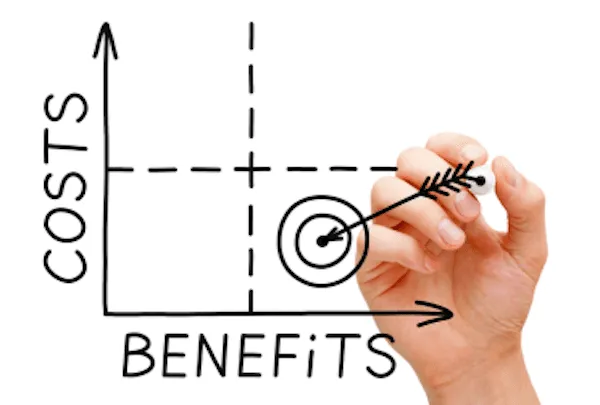
There are several simple methods involving the assessment of cost and benefits using. In this artilce we explore the "payback period", "cut-off period", "investment yield" and "return on equivalent annual investment" methods.
Payback Period
A common criterion used to judge proposals is the simple payback period. This method estimates the number of years needed to recoup the original capital invested. In the case of investment options the projects are ranked according to the number of years necessary to recoup the investment. Whilst the simple payback period is easy to understand the results can be misleading. The timing of cash flows is ignored which means that projects with high returns in the first few years will be favoured over projects where the cash inflows are expected to accrue some years after the investment. Further cash flows, subsequent to the payback period, are not taken into account. Given that this method does not take into account the time value of money, the result will always underestimate the more accurate discounted payback result. At best this method could be used to evaluate smaller investments such as changes to existing services, for example comparing alternative hot water services in a domestic context. It is also useful for elements of projects of a short life span.

Cut-off Period
This method requires setting an arbitrary cut-off period within which the money invested must be fully recouped. The period could, for example, be ten years, although for more risky projects the cut-off period can be as short as two or three years. The shortcomings of this method are easy to perceive. If the cash inflows were expected to accrue mainly after the first few years, worthwhile projects would be rejected.
Investment Yield
A yield is a percentage rate of return on an investment. 'Yield' is perhaps the most commonly used method of simple project assessment. It is the widely adopted method particularly for assessing commercial property, because 'yield' readily relates to the year by year profitability goals of investors. It involves expressing the project's return as a percentage of either the original capital investment or the value of the investment in the given period. The property industry distinguishes between gross and net yield. Gross yield is total returns in a given period (usually 12 months) divided by current investment value, which is then expressed as a percentage.
Net yield is net cash flow in a given period (again, usually 12 months) divided by current investment value, which is then expressed as a percentage. Average return analysis establishes an 'average' annual rate of return based on cash flows of a typical year of building operation or by adding together positive net cash flows and dividing by the number of periods.
Return on equivalent annual investment
This method is designed to overcome the problem of many cash outflows (such as in a construction project where there are numerous outflows) and perhaps only one inflow (say when the project is sold). The idea behind the method is to compute a weighted average of the funds outstanding over the life of the investment.
This method is most suited to simple, short projects which have simple payouts.




